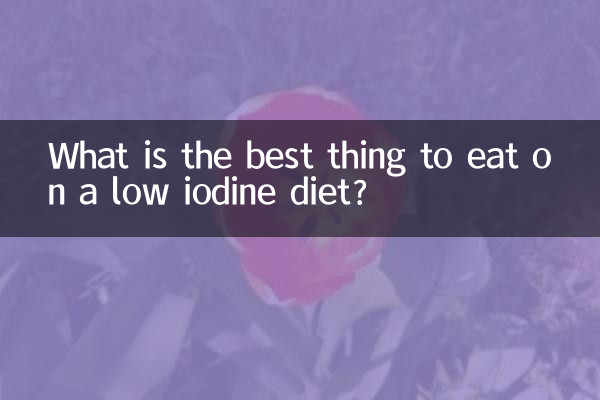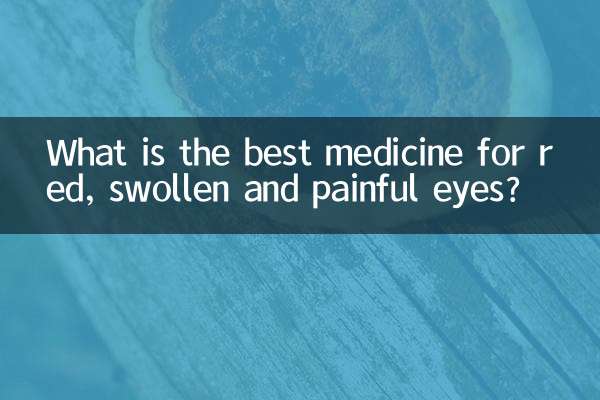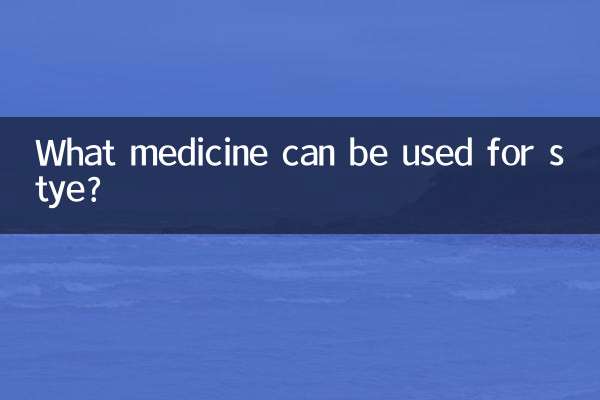What is the best thing to eat on a low iodine diet?
In recent years, with the improvement of health awareness, low-iodine diet has gradually become the focus of people's attention. Whether you have thyroid disease or are healthy, understanding low-iodine dietary options is crucial. This article will combine the hot topics and hot content on the Internet in the past 10 days to introduce you in detail the best choice for a low-iodine diet and provide structured data for reference.
1. Background of low iodine diet

A low-iodine diet is often recommended for people with hyperthyroidism, thyroid cancer, or those who require radioactive iodine therapy. The purpose is to reduce iodine intake to help control the condition or improve the effectiveness of treatment. However, a low-iodine diet is not completely iodine-free, but rather limits the intake of iodine.
2. Basic principles of low-iodine diet
1. Avoid foods high in iodine: such as kelp, seaweed, sea fish and other seafood.
2. Choose low-iodine foods: such as fresh vegetables, fruits, grains, etc.
3. Pay attention to condiments: avoid iodized salt and choose non-iodized salt.
4. Control the intake of dairy products: Dairy products such as milk and cheese may contain high amounts of iodine.
3. List of recommended foods for a low-iodine diet
| food category | Recommended food | Remark |
|---|---|---|
| Cereals | Rice, wheat, oats, corn | Avoid bread with added iodized salt |
| Vegetables | Spinach, carrots, broccoli, cucumbers | Fresh vegetables are low in iodine |
| Fruits | Apples, bananas, oranges, pears | Most fruits are naturally low in iodine |
| protein | Chicken, beef, pork, eggs (white) | Avoid seafood and processed meats |
| Grease | Olive oil, canola oil, sunflower oil | Avoid seaweed-derived oils |
4. Precautions for a low-iodine diet
1.cooking method: It is recommended to use simple cooking methods such as steaming, boiling, and baking, and avoid using iodine-containing condiments.
2.Dining out: When dining out, ask specifically about the use of ingredients and condiments.
3.Nutritionally balanced: While limiting iodine, it is necessary to ensure adequate intake of other nutrients.
4.individual differences: Different diseases have different restrictions on iodine, so you need to adjust your diet according to your doctor’s advice.
5. Common misunderstandings about low iodine diet
| Misunderstanding | fact |
|---|---|
| A low-iodine diet means no iodine at all | A low-iodine diet restricts iodine intake rather than completely eliminating iodine |
| All vegetables are suitable for a low-iodine diet | Some vegetables such as kelp and seaweed contain high iodine content and should be avoided |
| A low-iodine diet can be maintained for a long time | A low-iodine diet is usually a short-term treatment requirement, and long-term medical advice is required. |
6. Recipe recommendations for low iodine diet
1.breakfast: Oatmeal (no iodized salt), boiled eggs (white), apples.
2.Lunch: Steamed chicken, rice, stir-fried spinach.
3.dinner: Roast beef, steamed pumpkin, broccoli salad (no iodine seasoning).
7. Summary
A low-iodine diet is a special diet that requires scientific planning and strict compliance. By choosing natural low-iodine ingredients, avoiding high-iodine foods, and paying attention to cooking methods, you can effectively control your iodine intake. At the same time, individual differences and medical advice are the keys to implementing a low-iodine diet. Hopefully the information provided in this article will help you better understand a low-iodine diet and make informed dietary choices.
If you have any questions or need personalized dietary advice, always consult a professional doctor or nutritionist.

check the details

check the details